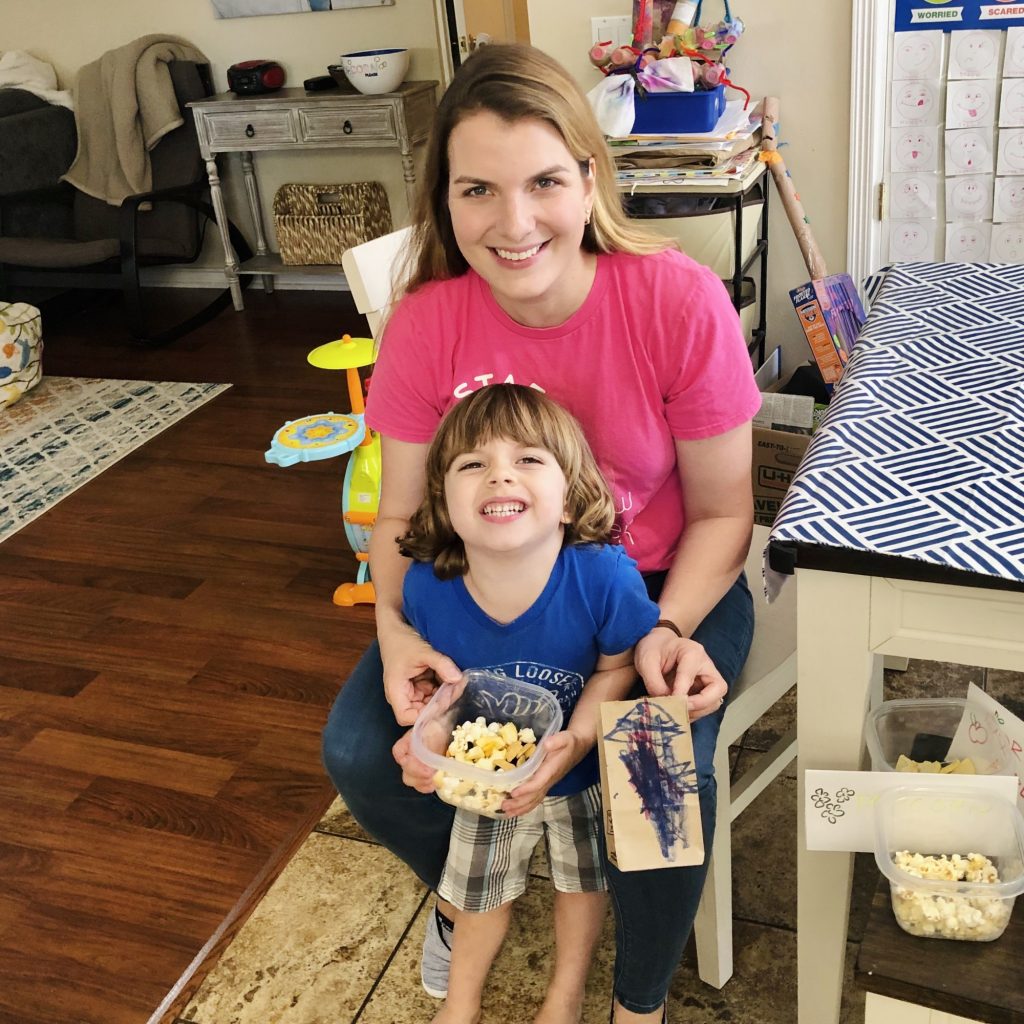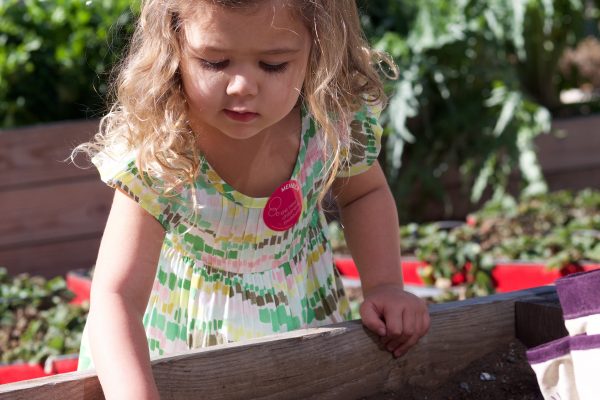As part of our ScholarShare 529 Toddler Time at Home program, we will be making the perfect, toddler-friendly snack for your outdoor adventures – Toddler Trail Mix! This activity allows your little one to make independent choices and allows you to easily introduce new foods to them.
directions
1. Pick a wide variety of toddler-friendly snacks and put each snack into its own Tupperware container or bowl. Examples of toddler-friendly snacks include: dried apples, raisins, pumpkin seeds, bunny grahams, mini marshmallows, coconut, dried blueberries, goldfish and popcorn.
2. Write the names of each snack on a separate piece of paper. Put the paper for each snack by its container. Then read each snack name with your little one and have them practice identifying each snack.
3. Allow your little one to scoop the snacks they would like to go into their mix. Let them make the choice to decide what and how much goes into their mix. They should put their mix into a Tupperware container with a lid on it.
4. Put the lid on the container once they have finished their trail mix. Let them shake the closed container to mix up all the ingredients.
5. Put some of the trail mix into a paper bag. Your little one can decorate and personalize their paper bag if they would like.
6. Enjoy your trail mix!
Toddler to Transitional Kindergarten Learning Connections
Cooking together with early learners (ages 2 – 5) is a great way to teach hands-on skills in measuring, counting and motor skills as well as building memories and fostering collaboration. To further increase the learning opportunities while making this toddler trail mix recipe together, consider incorporating one or more ideas below.
Use Your Senses
Encourage your child to experience this activity using their senses. Invite them to touch, smell, examine and taste the ingredients. Have them talk about their discoveries and to consider what they like and why.
You might talk about/ask:
- What ingredients do you see? How do they smell? Feel? Taste?
- Which ingredient is your favorite? What do you like best about it?
Making Healthy Choices
Use this time to discuss with your child the importance of making healthy choices with the foods that we eat.
You might talk about/ask:
- What ingredients can we put in our trail mix that will help us to stay healthy and strong?
- Why are dried fruits, seeds, etc., so important for us to eat along with other foods?
Bag It Up!
Invite your little one to decorate their own bag or container for holding their special trail mix. If using a standard-sized paper sandwich bag, cut the top half off first – to make it more toddler-friendly. Then, use markers, paint, stickers or other materials to let your little one dress it up with their ideas. If using supplies that need time to dry, be sure to try this activity ahead of the trail mix-making!
Share a Story
Reading is a wonderful vehicle for learning and for introducing new ideas to early learners. Select engaging and age-appropriate books that feature camping/outdoor themes and related topics to read to your child before or after the toddler trail mix-making activity.
Recommended Related Reading (Ages 2 – 5):
- The Hike by Alison Farrell
- A Fun Picture Guessing Game Book for Kids Ages 2-5 Year Old’s by Little Dezign Press
- The Camping Trip by Jennifer K. Mann
Preschool Learning Foundations Standards (Nutrition, Social Emotional Development and Language and Literacy)
Age 48 months:
- Identify different kinds of foods.
- Indicate food preferences that reflect familial and cultural practices.
- Contribute to maintaining positive relationships with their primary family attachment figures.
- Understand and use accepted words for categories of objects encountered and used frequently in everyday life.
Age 60 months:
- Identify a larger variety of foods and may know some of the related food groups.
- Indicate food preferences based on familial and cultural practices and on some knowledge of healthy choices.
- Take greater initiative in seeking support from their primary family attachment figures.
- Understand and use accepted words for categories of objects encountered in everyday life.




